Introduction to Gluten-Free Pancakes
What Does Gluten-Free Mean?
Gluten-free refers to foods that do not contain gluten, a protein found in wheat, barley, and rye. Gluten-free diets are essential for individuals with celiac disease, gluten intolerance, or wheat allergies. By using alternative flours like almond, oat, or rice flour, you can create pancakes that are light, fluffy, and completely gluten-free.
Why Choose Gluten-Free Pancakes?
Gluten-free pancakes are a great choice not only for those with dietary restrictions but also for anyone seeking healthier breakfast options. They often incorporate nutrient-dense ingredients and are less processed than traditional pancake recipes.
Common Challenges in Gluten-Free Baking
Gluten provides structure and elasticity to baked goods, so creating gluten-free pancakes can be challenging. Issues like a crumbly texture or dense consistency can arise. However, using the right combination of gluten-free flours, binding agents like eggs or xanthan gum, and moisture-rich ingredients ensures success.
Benefits of Gluten-Free Pancakes
Suitable for Gluten-Intolerant Individuals
Gluten-free pancakes are a safe and delicious breakfast option for individuals with celiac disease or gluten sensitivity, offering them a chance to enjoy classic pancakes without health risks.
Easy on Digestion
Gluten-free ingredients, such as almond or oat flour, are generally easier to digest. They provide essential nutrients like fiber and protein, making them a satisfying and gut-friendly choice.
Incorporating Wholesome Ingredients
Gluten-free pancakes often include wholesome ingredients like bananas, nuts, or seeds. These not only enhance the flavor but also increase the nutritional value, offering a balanced meal to start your day.
Gluten-free pancakes prove that you don’t need gluten to enjoy a stack of fluffy, delicious pancakes. With the right ingredients and techniques, you can create a breakfast that’s both indulgent and nourishing.
Essential Ingredients for Gluten-Free Pancakes
Gluten-Free Flour Options (Almond, Rice, Oat)
- Almond Flour: A low-carb option that adds a nutty flavor and richness to pancakes. Almond flour creates soft, moist pancakes, ideal for keto-friendly recipes.
- Rice Flour: A neutral, versatile choice that mimics the texture of traditional wheat flour. Best when blended with other gluten-free flours for balance.
- Oat Flour: High in fiber and slightly sweet, oat flour produces light and fluffy pancakes. Ensure the oats are certified gluten-free to avoid cross-contamination.
Binding Agents (Eggs, Chia Seeds, Xanthan Gum)
- Eggs: Provide structure and moisture, making them a reliable binder for gluten-free batter.
- Chia Seeds or Flax Seeds: Create a gel-like consistency when mixed with water, making them excellent egg substitutes for vegan recipes.
- Xanthan Gum: A small amount of this gluten-free stabilizer helps mimic the elasticity of gluten, improving texture and preventing crumbling.
Sweeteners and Flavors
- Natural Sweeteners: Use honey, maple syrup, or coconut sugar for a touch of sweetness without refined sugar.
- Vanilla Extract: Adds warmth and depth of flavor to the batter.
- Spices: Cinnamon, nutmeg, or a pinch of cardamom can elevate the taste of gluten-free pancakes.
Tools and Equipment Needed
Essential Kitchen Tools
- Mixing Bowl: For combining wet and dry ingredients.
- Whisk or Spoon: To ensure the batter is smooth and evenly mixed.
- Spatula: For flipping pancakes without breaking them.
Choosing the Right Griddle or Pan
- Non-Stick Griddle: Ideal for even cooking and preventing sticking, making it beginner-friendly.
- Cast Iron Pan: Retains heat well, creating golden, crispy edges, but requires proper seasoning to prevent sticking.
Tips for Proper Measuring and Mixing
- Accurate Measurements: Use measuring cups and spoons to ensure the correct ratio of wet to dry ingredients, which is crucial for gluten-free recipes.
- Avoid Overmixing: Stir the batter gently to combine ingredients. Overmixing can lead to dense pancakes due to the lack of gluten.
- Rest the Batter: Allow the batter to sit for 5-10 minutes to let the flours hydrate, improving texture and consistency.
Having the right ingredients and tools ensures your gluten-free pancakes are light, fluffy, and delicious every time.
Step-by-Step Gluten-Free Pancake Recipe
Preparing the Ingredients
- Measure the Dry Ingredients: Combine your chosen gluten-free flour (almond, rice, or oat) with a pinch of baking powder, baking soda, and xanthan gum (if needed) for structure.
- Prepare the Wet Ingredients: Whisk together eggs (or a substitute), milk (or a dairy-free alternative), and a touch of vanilla extract. If you’re using mashed bananas or applesauce for sweetness, add them to the wet mixture.
- Optional Add-Ins: Prepare any additional ingredients like blueberries, chocolate chips, or spices to enhance the flavor.
Mixing the Perfect Batter
- Combine Wet and Dry Ingredients: Gradually add the wet ingredients to the dry mix, stirring gently with a whisk or spoon until just combined. The batter should be smooth but not overly thin or thick.
- Let the Batter Rest: Allow the mixture to sit for 5-10 minutes to hydrate the gluten-free flour. This step improves the texture and consistency of the pancakes.
- Adjust Consistency: If the batter feels too thick, add a splash of milk. If it’s too runny, sprinkle in a bit more flour.
Cooking Gluten-Free Pancakes
- Preheat the Griddle or Pan: Heat a non-stick griddle or skillet over medium heat. Lightly grease it with butter, oil, or cooking spray.
- Pour the Batter: Use a ladle or measuring cup to pour small circles of batter onto the hot surface. Avoid overcrowding the pan.
- Cook Until Bubbles Form: Wait for bubbles to appear on the surface and the edges to look set (about 2-3 minutes).
- Flip and Finish Cooking: Carefully flip the pancakes and cook the other side for another 2 minutes, until golden brown.
- Serve Warm: Stack the pancakes on a plate and serve immediately with your favorite toppings.
Common Mistakes to Avoid
Overmixing Gluten-Free Batter
Overmixing the batter can cause gluten-free pancakes to become dense and chewy. Stir just until the ingredients are combined, leaving a few lumps if necessary.
Using the Wrong Flour Blend
Not all gluten-free flours work the same way. Using a single type of flour, like almond or rice flour alone, can result in a pancake that is too dense or crumbly. Opt for a blend or combine flours for better texture and flavor.
Overcooking or Undercooking the Pancakes
- Overcooking: Cooking on high heat can burn the outside while leaving the inside undercooked. Use medium heat for even cooking.
- Undercooking: Ensure the pancakes are fully cooked by checking for golden edges and a firm center before flipping or serving.
By following these steps and avoiding common pitfalls, you’ll achieve perfectly fluffy and delicious gluten-free pancakes every time!
Tips for Fluffy Gluten-Free Pancakes
Adding Leavening Agents (Baking Powder/Soda)
Leavening agents like baking powder and baking soda are essential for creating light and fluffy gluten-free pancakes. Baking powder adds lift, while baking soda reacts with acidic ingredients like buttermilk or yogurt to create air bubbles that make the pancakes rise. Use the recommended amounts in your recipe, but ensure they are fresh for optimal results.
Using Buttermilk for Tender Pancakes
Buttermilk is a secret ingredient for tender and moist gluten-free pancakes. Its acidity not only enhances the flavor but also reacts with baking soda to add extra lift, making the pancakes light and airy. If you don’t have buttermilk, you can substitute it by adding a tablespoon of vinegar or lemon juice to regular milk and letting it sit for a few minutes.
Letting the Batter Rest
Letting your gluten-free pancake batter rest for 5-10 minutes allows the gluten-free flour to fully hydrate. This step is particularly important because gluten-free flours tend to absorb more liquid than wheat flour. Resting the batter improves its consistency and helps prevent the pancakes from being too dense or dry.
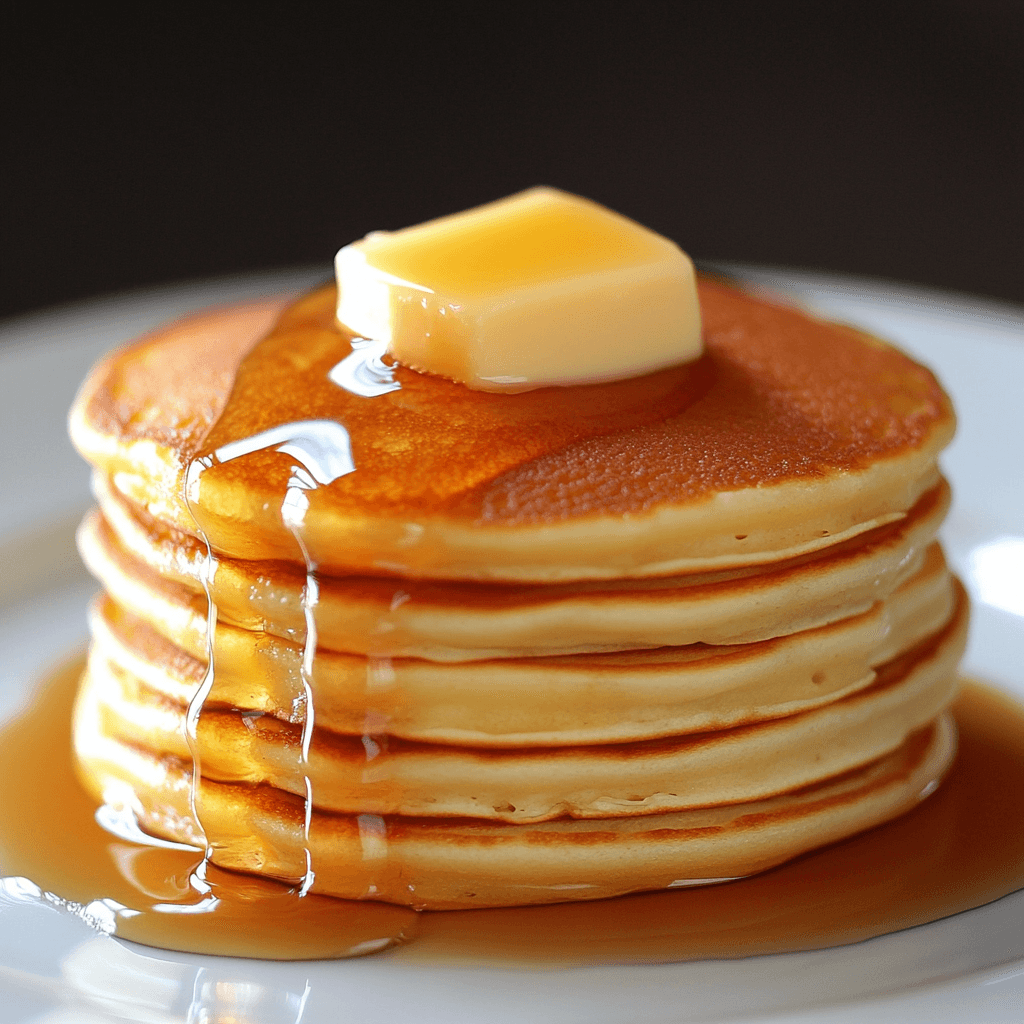
Creative Variations of Gluten-Free Pancakes
Blueberry Gluten-Free Pancakes
- How to Make: Fold fresh or frozen blueberries into the batter just before cooking to prevent them from sinking to the bottom.
- Toppings: Serve with a drizzle of maple syrup or a dollop of Greek yogurt for a classic breakfast.
Vegan Gluten-Free Pancakes
- How to Make: Use plant-based milk (like almond or oat milk) and replace eggs with flaxseed or chia seed gel (1 tablespoon mixed with 2.5 tablespoons of water). Use coconut oil for added moisture.
- Toppings: Top with sliced bananas, almond butter, or a sprinkle of chopped nuts for a hearty and satisfying meal.
Chocolate Chip Gluten-Free Pancakes
- How to Make: Mix dark or semi-sweet chocolate chips into the batter. For even distribution, sprinkle some on top of the pancakes after pouring the batter onto the griddle.
- Toppings: Add whipped cream, a dusting of cocoa powder, or a drizzle of chocolate syrup for a dessert-inspired breakfast.
With these tips and creative variations, you can enjoy fluffy, flavorful gluten-free pancakes tailored to your taste and dietary preferences.
Nutritional Information
Caloric and Macronutrient Breakdown
The nutritional content of gluten-free pancakes varies depending on the ingredients used. Here’s a general breakdown for a serving of two medium pancakes (made with almond or oat flour):
- Calories: 200-250
- Protein: 6-8 grams (higher if eggs or protein powder are added)
- Carbohydrates: 20-25 grams
- Fats: 8-10 grams (mostly from almond flour or added oils)
Using rice flour or a blend will generally result in higher carbohydrate content and slightly lower fats.
Health Benefits of Gluten-Free Ingredients
- Almond Flour: Rich in healthy fats, vitamin E, and magnesium, it supports heart health and energy production.
- Oat Flour: High in fiber and antioxidants, it aids digestion and promotes gut health.
- Rice Flour: A light and easily digestible option that is gentle on sensitive stomachs.
By incorporating nutrient-dense flours and natural sweeteners, gluten-free pancakes offer more vitamins, minerals, and fiber than traditional pancakes made with refined wheat flour.
Tips for Lowering Calories
- Use Egg Substitutes: Replace eggs with mashed bananas or applesauce to cut calories and add natural sweetness.
- Opt for Low-Fat Milk: Use almond, oat, or skim milk instead of full-fat dairy to reduce fat content.
- Limit Added Sugar: Sweeten the batter naturally with cinnamon, vanilla extract, or a small amount of honey.
- Cook with Minimal Oil: Use a non-stick pan or cooking spray instead of butter or coconut oil.
By understanding the nutritional profile and using smart substitutions, gluten-free pancakes can be a healthy, satisfying, and delicious meal for any diet.
Frequently Asked Questions (FAQs)
Can I Use Regular Milk in Gluten-Free Pancakes?
Yes, you can use regular milk in gluten-free pancakes unless you have dietary restrictions that require a dairy-free option. Regular milk works well to provide moisture and flavor. If you prefer dairy-free, almond, oat, or coconut milk are excellent substitutes.
What’s the Best Gluten-Free Flour Blend?
The best gluten-free flour blend depends on your preference and recipe. A combination of almond flour, oat flour, and rice flour often works well for pancakes. Pre-made gluten-free blends, such as Bob’s Red Mill or King Arthur, are also great choices as they’re formulated for structure and consistency.
What Are Gluten-Free Pancakes Made Of?
Gluten-free pancakes are typically made with:
- Gluten-Free Flour: Such as almond, oat, rice, or a pre-mixed gluten-free blend.
- Binding Agents: Eggs, chia seeds, or xanthan gum to hold the batter together.
- Leavening Agents: Baking powder or baking soda for fluffiness.
- Liquid Ingredients: Milk or a dairy-free alternative for moisture.
What Alternative Flour Is Best for Pancakes?
- Almond Flour: Great for low-carb and keto-friendly pancakes, with a nutty flavor.
- Oat Flour: High in fiber and provides a soft, fluffy texture.
- Coconut Flour: Low in carbs but very absorbent, so it requires more liquid.
What Are IHOP Gluten-Free Pancakes Made Of?
IHOP’s gluten-free pancakes are made using a certified gluten-free flour blend that includes rice flour, tapioca starch, sugar, and potato starch. These ingredients help replicate the texture and flavor of traditional pancakes while remaining gluten-free.
Can You Add Baking Powder to Gluten-Free Flour?
Yes, adding baking powder to gluten-free flour is essential for light and fluffy pancakes. Gluten-free flours often lack the elasticity of traditional wheat flour, so leavening agents like baking powder or baking soda help create the necessary lift and texture.
These FAQs provide clarity on common questions about gluten-free pancakes, helping you achieve the perfect stack every time!
Serving Suggestions
Topping Ideas for Gluten-Free Pancakes
- Fresh Fruits: Top your pancakes with sliced bananas, strawberries, blueberries, or raspberries for a burst of natural sweetness and color.
- Nut Butters: Spread almond, peanut, or cashew butter for added protein and a creamy texture.
- Maple Syrup or Honey: A classic choice that enhances the flavor of gluten-free pancakes.
- Yogurt and Granola: Add a dollop of Greek yogurt and a sprinkle of granola for a crunchy and creamy contrast.
- Chocolate Chips or Shavings: For an indulgent touch, sprinkle dark or semi-sweet chocolate chips over the pancakes.
Drinks and Sides to Pair with Pancakes
- Drinks:
- Coffee or espresso for a bold, energizing pairing.
- Freshly squeezed orange juice for a refreshing and tangy contrast.
- Smoothies made with fruits and spinach for a nutrient-packed addition.
- Sides:
- Scrambled eggs or turkey sausage to complement the pancakes with protein.
- A mixed fruit salad for a light and healthy side dish.
- Crispy bacon for a savory touch that balances the sweetness of the pancakes.
Storing and Reheating Gluten-Free Pancakes
Proper Storage Methods
- Refrigeration: Allow the pancakes to cool completely before stacking them with parchment paper in between to prevent sticking. Store in an airtight container in the refrigerator for up to 3 days.
- Freezing: Lay the pancakes flat on a baking sheet and freeze until solid. Then, transfer them to a freezer-safe bag or container, placing parchment paper between layers to avoid clumping. They can be frozen for up to 1 month.
Reheating Tips for Maintaining Texture and Flavor
- Microwave: Place a pancake on a microwave-safe plate and cover it with a damp paper towel to retain moisture. Heat for 20-30 seconds or until warm.
- Oven: Preheat the oven to 350°F (175°C). Arrange the pancakes on a baking sheet and heat for 5-7 minutes, flipping them halfway through. This method preserves the texture.
- Toaster: Reheat pancakes in a toaster for a quick and slightly crispy result. Ensure the pancakes are not too thick to fit into the slots.
With these serving suggestions and storage tips, you can enjoy gluten-free pancakes fresh or as leftovers without compromising their taste or texture.
Hosting a Gluten-Free Breakfast
Menu Ideas for a Gluten-Free Spread
Create a diverse and delicious gluten-free breakfast spread with the following options:
- Main Dish: Gluten-free pancakes served with a variety of toppings like fresh fruits, syrups, and nut butters.
- Egg Dishes: Include scrambled eggs, a veggie-packed frittata, or a gluten-free quiche.
- Sides: Offer gluten-free breakfast sausages, crispy bacon, or roasted sweet potatoes.
- Baked Goods: Add gluten-free muffins, banana bread, or scones to the table for a sweet treat.
- Drinks: Complement the meal with smoothies, fresh juices, coffee, or herbal tea.
Tips for Catering to Dietary Restrictions
- Label Everything: Clearly label gluten-free dishes to avoid confusion, especially in a mixed dietary setting.
- Cross-Contamination Awareness: Use separate utensils, pans, and cutting boards for gluten-free items to prevent contamination.
- Offer Variety: Include vegan, dairy-free, or nut-free options to accommodate additional dietary needs.
Fun Facts About Gluten-Free Foods
The Rise of Gluten-Free Diets Worldwide
- Popularity Boom: The global gluten-free market has grown significantly in recent years, with people adopting gluten-free diets for medical reasons and health trends.
- Celiac Awareness: Increased awareness of celiac disease has driven demand for gluten-free options, making it easier than ever to find alternatives in grocery stores and restaurants.
- Athlete Endorsements: Many athletes and fitness enthusiasts embrace gluten-free diets, claiming improved digestion and energy levels.
Misconceptions About Gluten-Free Eating
- Not Always Healthier: While gluten-free foods can be healthy, not all are inherently better. Some gluten-free products are highly processed and can be higher in sugar or fats.
- For Everyone? Gluten-free diets are essential for those with gluten-related disorders but are not necessary for individuals without gluten sensitivity or celiac disease.
- Taste and Texture: With modern innovations in gluten-free baking, the misconception that gluten-free foods lack flavor or texture has been debunked. Many gluten-free recipes now rival or even surpass their traditional counterparts in taste.
By hosting a thoughtful gluten-free breakfast and understanding the evolution and myths of gluten-free eating, you can provide an inclusive, flavorful experience for all your guests.
For the article about a gluten-free pancake recipe, here are some effective internal linking opportunities:
When discussing alternative pancake recipes, you could link to the Ultimate Guide to Making Bisquick Pancakes to provide readers with another easy-to-follow breakfast option. For readers seeking a protein-packed variation, referencing the Ultimate Protein Pancakes Recipe offers a health-focused twist. Additionally, to inspire creativity in breakfast baking, include a link to the Pumpkin Banana Loaf as a gluten-free-friendly side dish or alternative.
These internal links not only enhance the article’s value by connecting related content but also encourage readers to explore complementary recipes on the site.
What’s the best way to store leftovers?
Keep leftovers in an airtight container in the fridge for up to 4 days. Reheat in the microwave or oven until hot and bubbly. For food safety tips, refer to USDA guidelines on leftovers .
Conclusion
Why Gluten-Free Pancakes Are a Delicious and Healthy Choice
Gluten-free pancakes are not just a substitute for traditional pancakes—they are a flavorful and nutritious option in their own right. By incorporating wholesome, gluten-free ingredients like almond flour, oat flour, and natural sweeteners, you can create a stack that is light, fluffy, and full of flavor. These pancakes cater to those with gluten sensitivities while offering benefits like improved digestion and higher nutrient content. Whether you enjoy them as a weekend treat or a regular part of your breakfast rotation, gluten-free pancakes are a versatile and satisfying choice that everyone can enjoy. Indulge in their deliciousness while nourishing your body!
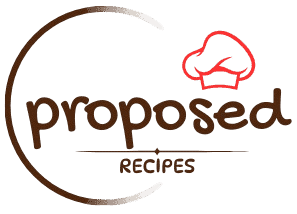
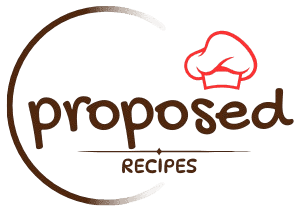
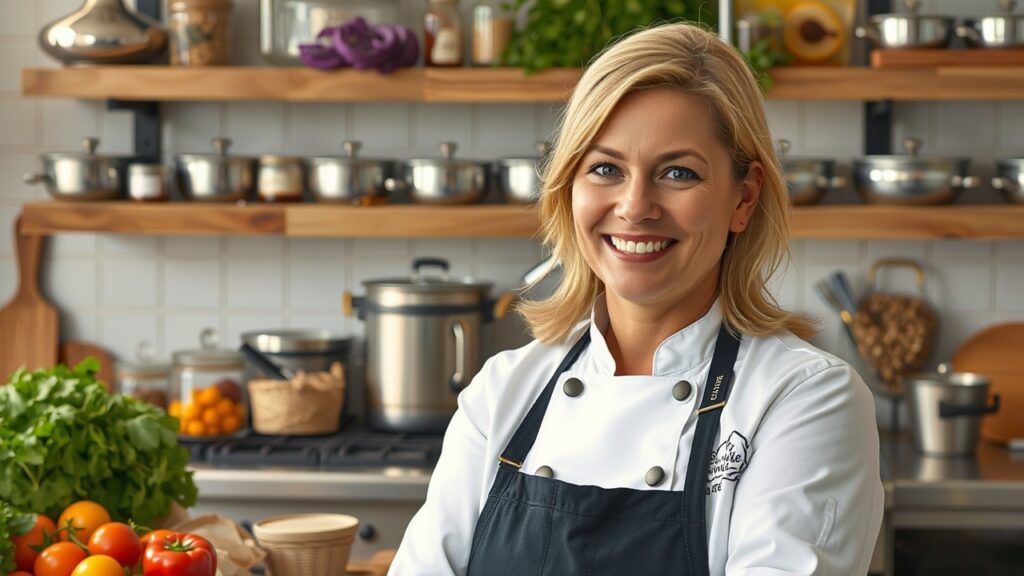
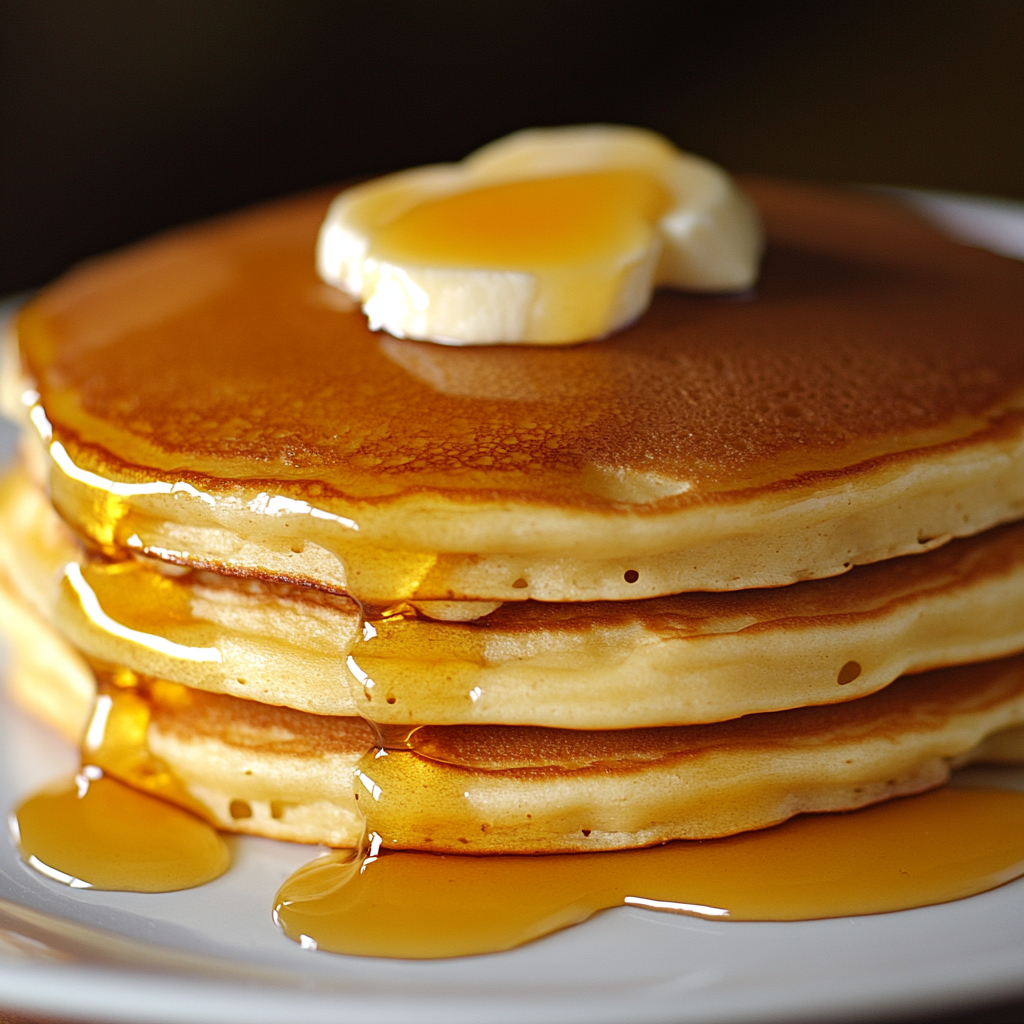


One thought on “The Ultimate Guide to a Delicious Gluten-Free Pancake Recipe”
Comments are closed.